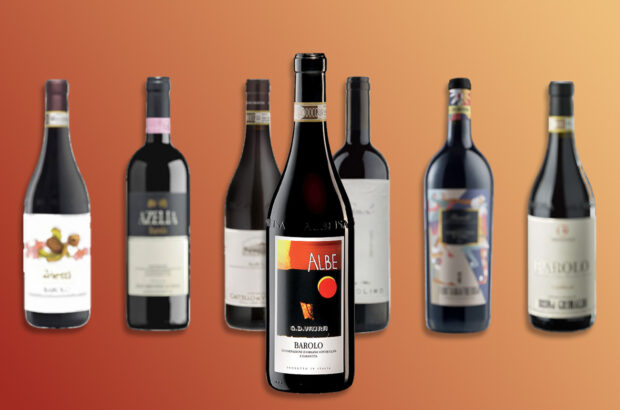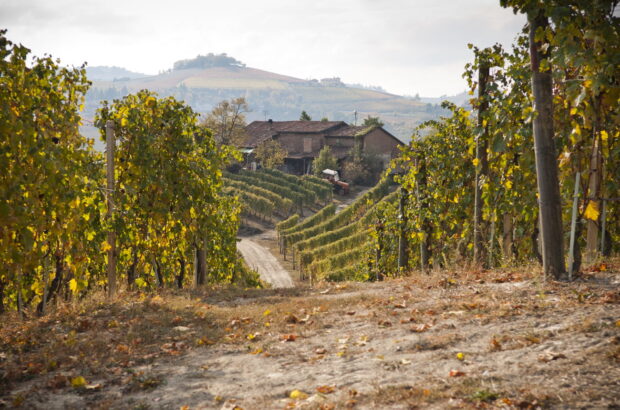Already the country’s most widely planted grape, increased stylistic diversity and an expansion into new terroirs point to an even brighter future, says Anthony Rose...
-
165 wines tasted with two rated Exceptional and eight Outstanding
-
The panel tasters were: Tina Gellie, Roger Jones and Anthony Rose
Accounting for nearly half of Australia’s red wine harvest, Shiraz is the country’s signature grape variety. With a crush of half a million tonnes last year – more than both Chardonnay and Cabernet Sauvignon – Shiraz throws sand in the faces of its closest rivals. But it’s not just about size; Shiraz also impresses with the expanding spread of regions where it is able to flourish.
From a French perspective, Syrah is at its best in the marginal climate of the cool northern Rhône. In the southern Rhône, it needs Grenache and Mourvèdre to bolster it. If that were true of Australia, Shiraz should only by rights flourish in the cool climates of South Australia’s Coonawarra and Eden Valley, or the Grampians and Yarra Valley in Victoria.
The fact that it flourishes elsewhere is down to unique circumstances in Australia. As Brian Croser says: ‘In the benign climate belt between 32° and 38° south, on the oldest geology and soils on the globe, Australia’s unique latitudinal 5,000km southern coastal interface with the globe’s coldest ocean… provides unique growing circumstances for this most adaptable of varieties.’
Scroll down to see the top wines from this panel tasting
On the right path
In this way, Shiraz is capable of retaining the acidity, aroma, generosity of fruit and fine texture required to produce different styles from a broad diversity of terroirs. Styles divide broadly between the powerful opulence of hot Barossa Valley (and to an extent the inland regions); the more restrained, spicy reds of warm McLaren Vale, Clare Valley and Heathcote, as well as milder Yarra Valley, Eden Valley, Coonawarra and Great Western; then the intensely perfumed, elegant wines of the cooler Adelaide Hills, Canberra and Grampians.
Quick link: View all 165 wines from this panel tasting
In tandem with the opening-up of new terroirs, there’s been a trend away from power and oak to a more refreshing style. Better vineyard management to reduce vigour and yield, balance leaf canopy and harvest more intelligently make a contribution, along with cellar techniques such as small batch fermentation, hand-plunging, whole bunches and better use of oak.
Thanks to the adaptability of the Aussies, there’s an ongoing redraft of the viticultural map of Australia in general – and Shiraz in particular. Even if radical shifts occur due to climate change, over a third of Australia’s vineyards are as cool as Bordeaux and can benefit in the short term from warmer temperatures. So Shiraz seems set to flourish as the growing territorial diversity manifests itself across an equal diversity of wine styles.
The scores
165 wines tasted
Entry criteria: Producers and UK agents were invited to submit their latest-release Australian Shiraz (85% minimum), priced at £15 or more. One wine per producer was permitted.
Exceptional 2
Outstanding 8
Highly Recommended 84
Recommended 67
Commended 4
Fair 0
Poor 0
Faulty 0
Continue reading below
Exceptional & Outstanding wines from the panel tasting:
See all 165 wines from the panel tasting
The results
The Shiraz landscape is shifting and there are many excellent wines at the premium level – especially if you wait a few years before opening them, says Amy Wislocki.
After two days tasting their way through 165 Australian Shiraz priced at £15 and above, our experts emerged ebullient. ‘Delighted!’ exclaimed Roger Jones. ‘On this showing, I’m impressed by where Australia is going in terms of its premium Shiraz,’ agreed Tina Gellie.
The competition from other global wine regions is stiff. ‘There’s Hawke’s Bay in New Zealand, for example,’ said Jones, ‘and South Africa is on the up.’ Anthony Rose concurred: ‘Many countries and regions are doing a fantastic job with Shiraz, but Australia is still at the forefront of that variety and breadth of regionality.’
In the discussion around specific regions, there were clear front-runners. Gellie pronounced Adelaide Hills ‘by far the standout region’ for its purity and vibrancy.
For Jones, it was Adelaide Hills too, with Clare Valley hot on its heels. ‘Adelaide Hills was absolutely stunning: fresh, focused, exciting and linear. It’s Syrah to me, not Shiraz. You sip these wines and it’s perfection. Clare is another exciting area – I like the perfumed restraint and elegance. I think it will take over from Barossa,’ he said.
‘In a sense, Adelaide Hills is a newcomer and it did brilliantly in the tasting,’ added Rose, who also loved the Clare wines. He also tipped Frankland River in Western Australia as a promising source of premium Shiraz.
As Rose pointed out, however, winemaking styles are so varied that it would be misleading to attribute a single style to each region. ‘The region is a guideline, but what’s more important – and more interesting ultimately – is the producer, the brand and the winemaker,’ he said. ‘Within each region there’s a massive variation in winemaking styles, from the almost medium-bodied to the very full-bodied to the overly full-bodied, super-ripe, Porty styles that are traditional.’
He added that the best wines were those that have ‘human input in the vineyard; where the winemaker has made sure to have raw material which constitutes 90% of the quality and character of the wine. The quality in the vineyard really shone through.’
The main message to come through was that these are, in the main, wines that need time to show at their best. ‘Please buy these young wines, but give them time in the cellar,’ urged Rose, ‘in particular the Barossa and McLaren Vale wines. Eight, 10 or even 12 years makes all the difference when it comes to complexity.’
‘We worked out quite quickly that you can’t taste Barossa wines for at least three or four years – and I’d hold off drinking them for at least 10,’ agreed Jones. ‘Lower-priced wines don’t need as much cellar time, but I’m concerned that producers are releasing £60 bottles of 2016 Shiraz now.’ Gellie agreed. ‘I know it’s expensive to keep wines back, but these are being released too early,’ she said. ‘The best wines were those with three or four years of bottle age, and unfortunately most consumers aren’t getting to see or appreciate them.’
‘Overall, 2014 seemed to be the point at which we could taste the maturing style of wine people would want to buy – savoury wines with more nuance and interest,’ she added. ‘The 2016s and 2015s were pretty closed,’ agreed Jones. ‘Once you got to the 2014s you suddenly saw excitement.’
Buy these premium wines, our tasters agreed, be patient and lay them down – even for just a few years, though ideally longer – and you’ll be rewarded.
Our tasters each pick their top 3 wines from the tasting:
Tina Gellie
Gellie is Decanter’s associate editor and has worked for the brand since 2008. An awarded wine writer and editor, she won several scholarships on the way to getting her WSET Diploma. She has more than 15 years’ experience in wine publishing, including as acting editor of Wine International. Before her wine career she was a newspaper journalist in London and Australia.
Vinteloper, SH/14, Adelaide Hills 2014
I’ve always loved David Bowley’s wines, and the move to sourcing Shiraz grapes from Adelaide Hills over McLaren Vale shows in its bright acidity and fresh fruit purity. Lifted and balanced; the 18 months of oak are well integrated. 98 Drink 2018-2026
Castagna, Genesis, McLaren Vale 2013
Julian Castagna’s lifted, vital Shiraz-Viognier blend from a 4ha biodynamic vineyard was a joy after so many over-oaked, high-alcohol examples. Violets and leathery blackcurrants on a silky palate with dusty, sappy elegance. 97 Drink 2018-2025
Payten & Jones, Major Kong, Yarra Valley 2015
A lighter, more quaffable style of Shiraz from 50% whole bunch and 50% whole berry fruit, bottled unfined and unfiltered with just nine months of oak to keep the bacony blue fruits to the fore. 95 Drink 2018-2024
Roger Jones
Jones and his wife Sue own Michelin-starred restaurant The Harrow at Little Bedwyn. His combined talents as a wine critic and chef have seen him set up Restaurant Australia for Wine Australia and The Tri Nations Wine Challenge to promote the wines of South Africa, New Zealand and Australia. He is wine consultant to The Caterer and contributing editor for The-Buyer.net.
Sidewood, Mappinga, Adelaide Hills 2015
This sustainable Adelaide Hills winery was founded in 2004 by Owen and Cassandra Inglis. Winemaker is Darryl Catlin, previously of Shaw + Smith. A beautiful, complete wine, which also shows great value. 98 Drink 2018-2025
Kilikanoon, Attinga 1865, Clare Valley 2013
This has stepped up a level since we judged it a Gold at last year’s DWWA. Hand-picked fruit from 150-yearold vines give this Clare Valley wine deep intensity but while still keeping a youthful feel. 98 Drink 2018-2028
Rolf Binder, Heyson, Barossa Valley 2013
An opulent wine that’s still youthful, made from dry-grown Barossa Shiraz planted in 1972, with a touch of Cabernet (4%). Balanced perfectly, with immense purity. 98 Drink 2018-2025
Anthony Rose
Rose is a wine critic who contributes to a variety of publications, including Decanter and The World of Fine Wine. He has won a number of awards, among them three Glenfiddich Wine Writer of the Year Awards and a Louis Roederer International Wine Columnist of the Year Award. A founding member of The Wine Gang, his own blog is anthonyrosewine.com.
Sidewood, Mappinga, Adelaide Hills 2015
The elegantly perfumed Adelaide Hills Shiraz is sourced from Ashwood estate. Marked by a spine of cool-climate acidity that balances the rich blackberry fruit. 98 Drink 2018-2025
Savaterre, Beechworth, Victoria 2014
The Beechworth region is clearly no one-trick pony as winemaker Keppell Smith’s delicious, Côte-Rôtie-like Shiraz from the Victorian Alps attests, with its pepper and spice notes and silky texture. 96 Drink 2019-2026
Schild Estate, Ben Schild Reserve, Barossa Valley 2014
When the Barossa Valley gets it right, it’s capable of producing some of the best-value Shiraz in the world. This excellent value red has succulently dark fruit and smoked meat notes. 95 Drink 2018-2025
Australian Shiraz: the facts
Area planted 39,893ha in 2017 (Australia’s most widely planted variety, 46% of plantings); peaked at about 45,000ha in 2009
Production More than 500,000 tonnes in 2017 (47% of red crush; national average purchase price per tonne up by 12%)
Top regions by volume Riverland (26%), Murray Darling-Swan Hill (15%), Riverina (14%) Top ‘cooler’ climate regions Barossa Valley (11%), McLaren Vale (6%) Top export destination China
Australian Shiraz: vintages
2017 Volumes were 15% up on 2016. A later harvest meant good overall quality.
2016 Started out warm, with a cool growing season. Early harvest for structured, well-balanced fruit.
2015 Warm year with rapid ripening: generosity, perfume and silky textures.
2014 Cool and late season after a warm summer. Good ripening gave intense aromatics and flavours.
2013 Hot and dry. Forward and generous wines, but aromatics are subdued on occasion.
2012 Cool and dry summer led to a fine, concentrated vintage.
2011 Cold, wet and late; a vintage to forget for many. Yet good in Western Australia.
2010 Mild, with a long growing season. This was a classic year.
2009 Reduced volumes but wines were generously textured.












